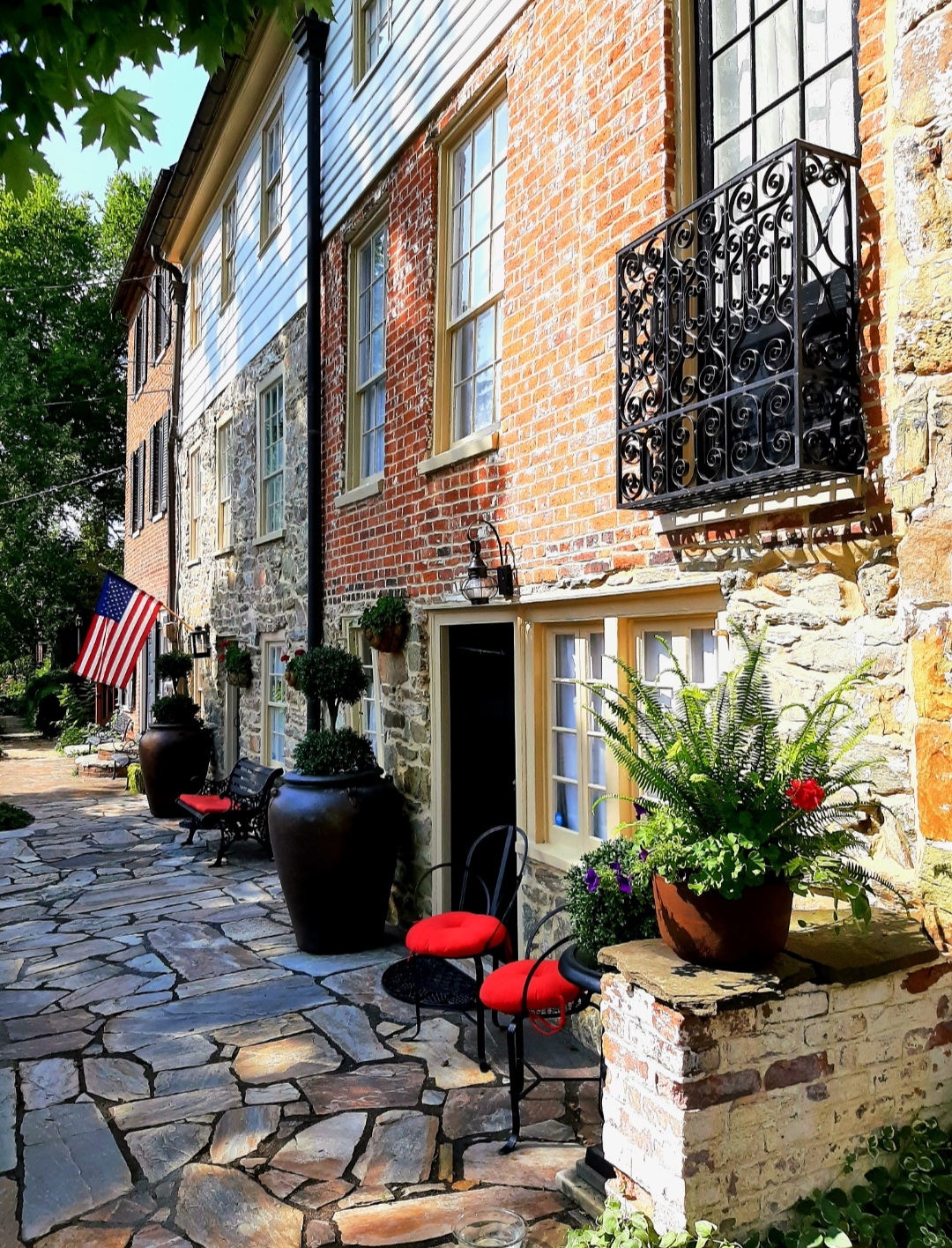
40162 Main Street
Open on Friday: 1:30pm to 5pm
The structures that now comprise 40162 Main Street were originally two separate commercial buildings built at different times – Palmer House (the stone house also known as the Charles Divine House – built ca. 1797) and Talbott’s Tavern (the extension of Talbott House was built c. 1811). Palmer House and Talbott’s Tavern were combined in the 1950s.
The stone house on the left-hand side of the block as you face the buildings is referred to as Palmer House. Palmer House was one of the early structures built on Main Street in Waterford and was thought to have been built in 1797 by Quaker John Williams. This structure pre-dated Talbott’s Tavern (next door) which was constructed in the early 1800’s. In 1808, Joseph Talbott, the owner of the “soon-to-be-constructed” Talbott House at 40170 Main Street, leased the first floor of Palmer House for his saddle making shop. In its early years, Palmer House was known as the Charles Divine House, named after one of its earliest owners. Palmer House, as it has more recently come to be known, wasn’t owned by Alfonzo Palmer, a local farm worker, until 1906.
Talbott’s Tavern (the extension to Talbott House), the stone and brick structure on the right-hand side of Palmer House was an addition to the original Talbott House at 40170 Main Street. This addition to Talbott House became known as Talbott’s Tavern and was thought to have been constructed in approximately 1811. This expansion to Talbott House enable Talbott to host more guests and hold meetings in the large room on the 2nd floor. At the time, open doorways between the structures allowed guests to flow freely between the two buildings.
Both Palmer House and Talbott’s Tavern were originally just one-story, however they eventually became two-story structures with retail located on the first level and more refined guest spaces upstairs. Later, the third and fourth floors were added to each side. A large porch spanned the front of the buildings and patrons would enter the 2nd story via the front porch stairs. The downstairs rooms were very rudimentary and likely had dirt, brick, stone, or wood floors.
Talbott’s Tavern is open through the courtesy of Kay Chewning.